Many of the things to do in Southampton relate to its history as a significant maritime city. Situated on the UK’s characterful south coast, Southampton faces the Isle of Wight across the Solent strait. On the mainland, this small, bustling city is surrounded by designated conservation areas and, to the west, the enchanting New Forest.
Southampton was also the departure point for the Titanic’s fateful journey, a tragic history engagingly covered by the city’s SeaCity Museum. Once you’ve explored the city’s immersive cultural institutions and well-preserved Old Town, you can seek out some of the many memorable things to do nearby. Its location puts it within easy striking distance of major UK destinations such as Stonehenge, Windsor Castle, and, of course, London.
Here are some of the unmissable things to do in Southampton and beyond.
1: Explore Southampton’s Old Town
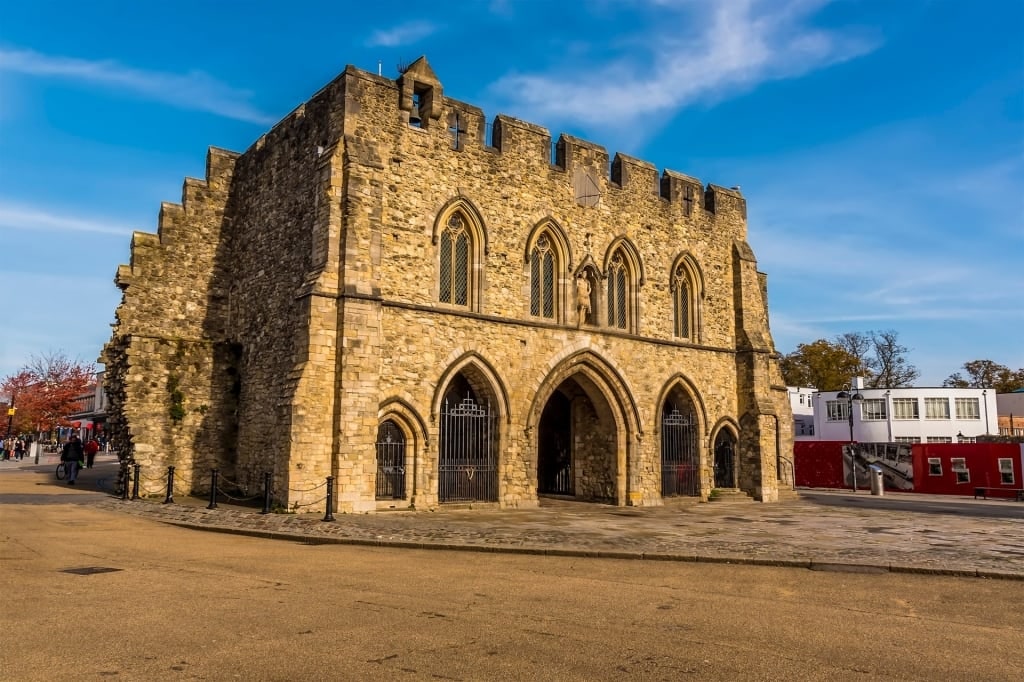
Bargate, Southampton
Despite extensive damage in the Second World War, Southampton managed to retain some choice parts of its medieval architecture. Exploring this charming corner of the city is one of the best things to do in Southampton.
Begin at the stout Bargate, the city’s medieval entrance dating back to 1290. It’s part of the Old Town Walls, recognized as some of the country’s most intact and impressive. The old walls, interspersed with the occasional bulging fortification, first enclosed the town following a raid by the French in 1380. Today, about half of the original walls remain standing.
The city has developed a self-guided walk (accompanied by a downloadable brochure) for those who want to work their way through the history of the listed buildings and ancient monuments that make this such a diverting place to spend time.
2: Contemplate the Mysteries of Stonehenge
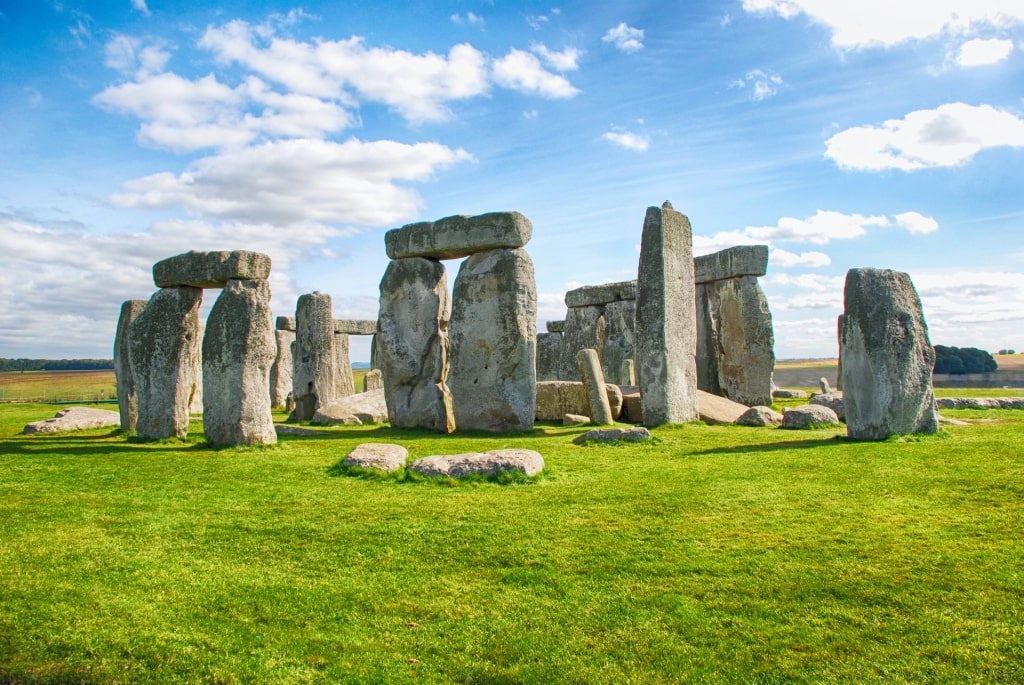
Stonehenge, Wiltshire
An hour’s drive from the Solent is Stonehenge—just one of a number of bucket-list things to do near Southampton and one of the best places to see in the world.
This instantly recognizable site is one of the extensive and impressive neolithic and Bronze Age henges in the world. The arrangement of gargantuan bluestones, transported over one hundred miles from a Welsh hillside, remains a profound sight, and much of its creation and the intention of its makers remains shrouded in mystery.
What you will discover, amid the detailed exhibition of artifacts organized in the visitor center, is that Stonehenge is considered to be a burial site as well as a place of spiritual significance for the people who constructed it. One of the highlights of the exhibition includes the facial reconstruction of a man found in a tomb in the area, perhaps the most lifelike reproduction of a person from Britain’s prehistoric period.

Avebury Stone Circle
If you’ve time, drive 40 minutes to Avebury. While not as outsized as Stonehenge, the stones found at this handsome Wiltshire village are more on a human scale, less crowded, and offer a rather intimate experience. This is especially the case in summer, with the long grass sprouting up around the stones lining the path that leads into the village and what is Britain’s largest stone circle.
3: See the Ponies (and Pigs) of the New Forest National Park
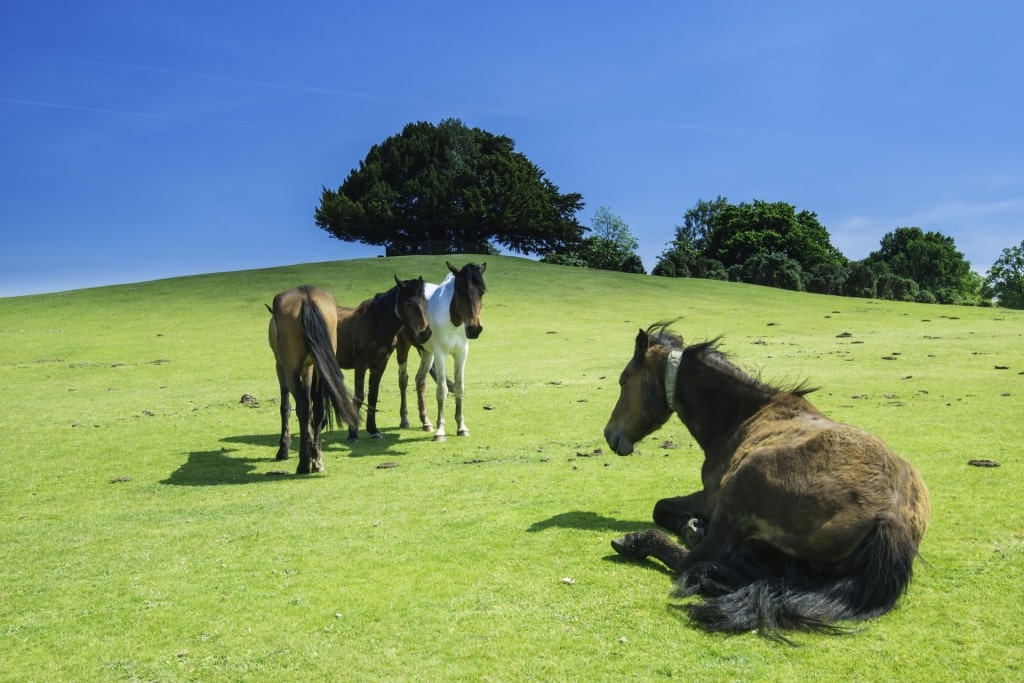
New Forest National Park
Along with the seaside, nature-loving inhabitants of Southampton are particularly blessed that to the west, just across the watery finger of the Solent, is the New Forest.
Contrary to its name, bestowed by William the Conqueror in the 11th century to designate it as a royal hunting ground, the New Forest is actually a blend of ancient woodland and heath. It’s protected for its diverse and rare species—such as the New Forest cicada—although you’re more likely to spot wild ponies ambling peacefully between the oaks. Their grazing habits, along with the donkeys and sheep that also patrol the forest, help to maintain this national park’s delicate and unique ecosystem.
Walk the woods, hire a horse, and trot through the trees, or stop into a village cafe and contemplate the biodiversity while devouring scones and cream. If you’re traveling with children around Europe, there are numerous attractions within its leafy borders with which to engage them, chief among them being Peppa Pig World.
4: Explore Historic Windsor Castle
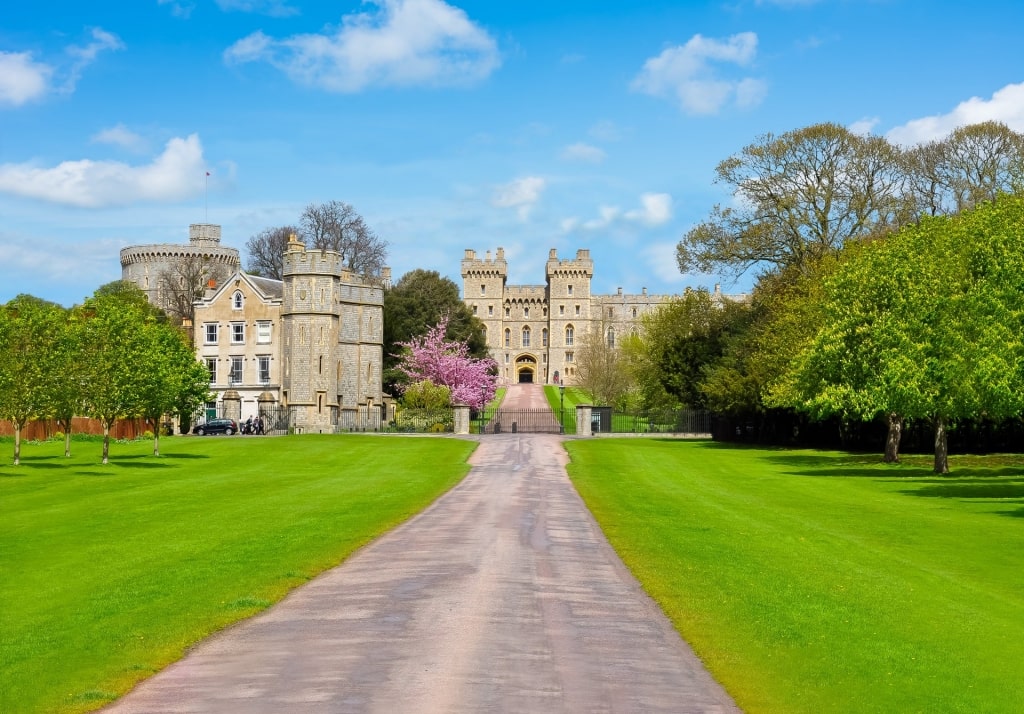
Windsor Castle
On London’s leafy western edge is the immense grandeur of Windsor Castle. Seen as the Queen’s “country escape”, Windsor Castle is the world’s oldest and longest-occupied castle. The royal residence sprawls over 13 acres with 1,000 ornately decorated rooms, mostly updated from its original, somewhat less cozy 11th-century decor.
Happily, while William the Conqueror might have had you hanged, drawn, and quartered for trespassing, the current Queen of England is more hospitable to the curious traveler. It’s possible to self-tour through the parts of the castle that are open to the public, but so intricate is the interior and so arcane the way of British royalty that a guided tour is recommended. Tours follow certain paths like “The Ceremonial Route”, which offers insight into how the Royal Family operates.
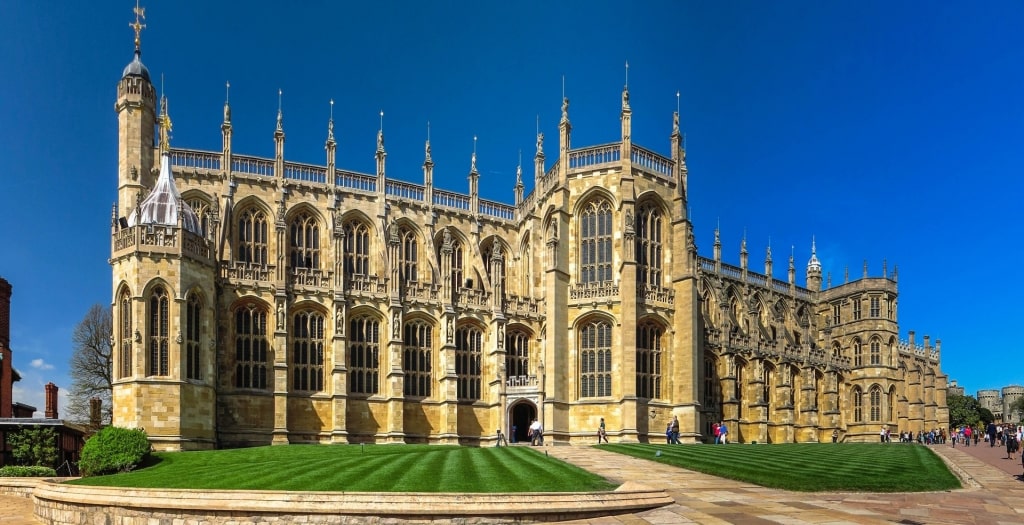
St. George’s Chapel, Windsor
While within the grounds, step onto the ornate tiles of St. George’s Chapel. This 15th-century church, one of the country’s finest examples of English Perpendicular Gothic architecture, is also the resting place of ten kings, including serial divorcé Henry VIII. A sunnier perspective: it was most recently the venue for the wedding of Prince Harry and Meghan Markle.
If you’re visiting in the morning, be sure to schedule in the famous Changing of the Guard. This world-famous display of ornamental precision starts at 11 a.m., but get there at least 15 minutes early to secure a good spot.
5: Spot a Future Prime Minister at Eton
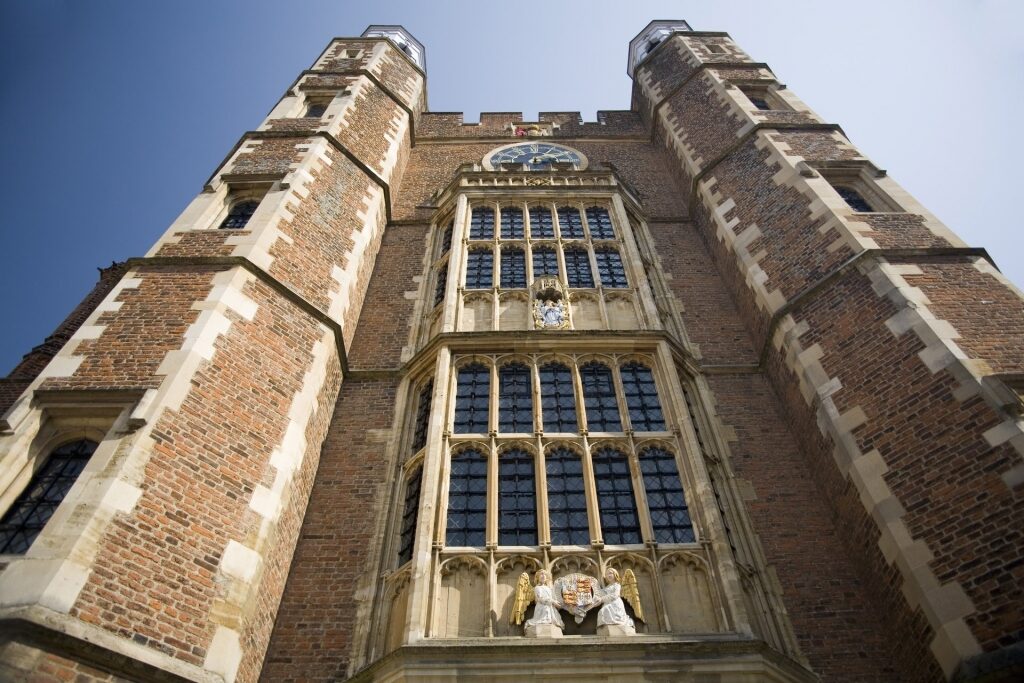
Eton College, Windsor
Only 15 minutes’ walk from Windsor Castle is Eton College. Located in its namesake town, this private school has an alumnus list that reads like a who’s who of the UK’s notable citizens, including the current PM, Boris Johnson.
In fact, Eton has produced no fewer than 20 British prime ministers since its creation by Henry VI in the 15th century. While the lessons are no longer taught in Latin and the modern school day runs a little shorter than 5 a.m. to 8 p.m. (as was the case in the 16th century) this “nursery of England’s gentlemen” as it’s called still observes strict tradition, such as top hats for pupils on special occasions.
It’s possible to join a group tour of the school’s historic buildings, with the guide offering much insight into how Eton manages to retain its preeminent role in the country’s political make-up. Perhaps it’s the famous tailcoats the boys wear, the student-to-teacher ratio of eight to one, or the aspirational view of Windsor Castle from the Eton town streets—visit and draw your own conclusions.
6: See the Tudor House and Garden
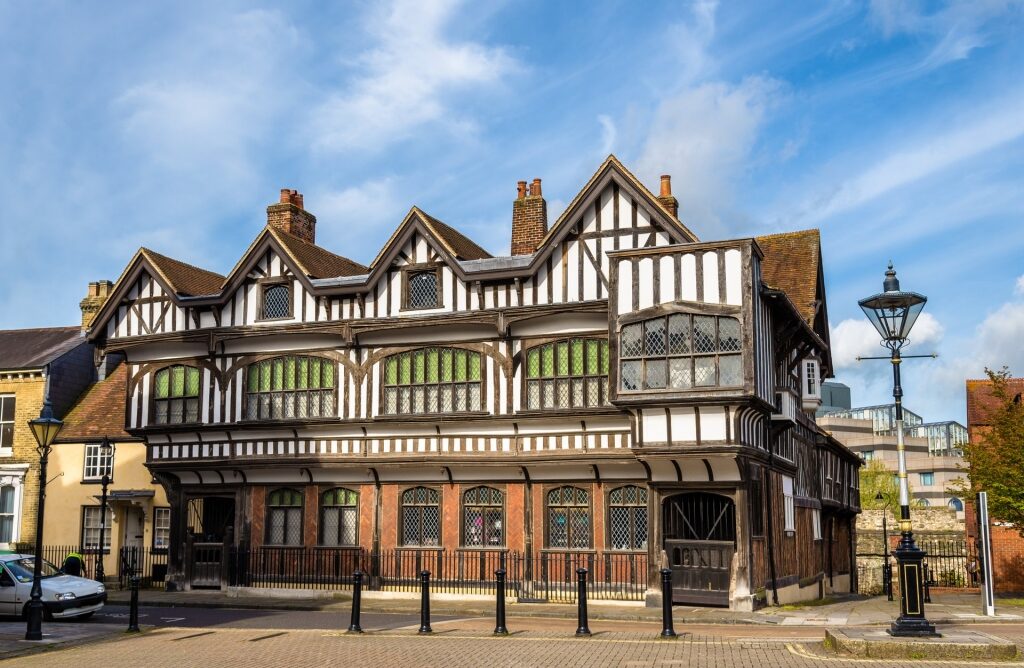
Tudor House and Garden, Southampton
Amid the cobbled streets, Georgian architecture, and atmospheric medieval pubs of the Old Town is the Tudor House and Garden—perhaps the jewel in Southampton’s trove of historic buildings. Taking time to explore this Grade I listed building’s interior is one of the most popular things to do in Southampton.
Located on Bugle Street, this magnificent example of Tudor architecture certainly looks grand with its pinstripe of timber beams and white walls. It’s had a checkered 800-year history, however, from its early days as a location for commercial enterprises such as book-binding and bonnet-producing to its transformation into a residential slum.
Travel through the house-cum-museum’s past using its interactive and multimedia exhibits, building a picture of life in medieval Southampton along the way. Afterward—if you’re not distracted by the coffee smells emanating from the in-house cafe—it’s through the wonky door frame and out to walk the garden. Its Renaissance-influenced order and geometric heart is a tidy and mellow place to digest what you’ve just learned.
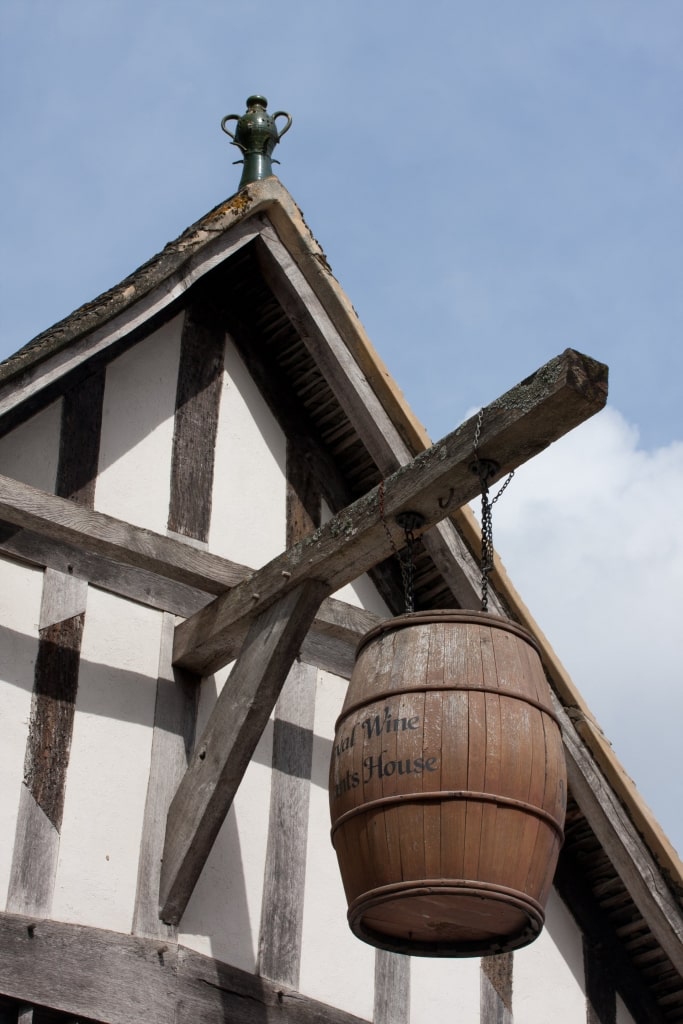
Medieval Merchant’s House, Southampton
Around the corner at 58 French Street, you’ll find the Medieval Merchant’s House, another of Southampton’s cultural treasures tucked beneath the old walls. Replete with replica period furnishings, it’s another deep dive into Southampton’s fascinating medieval world.
7: Taste Some World-Beating British Fizz
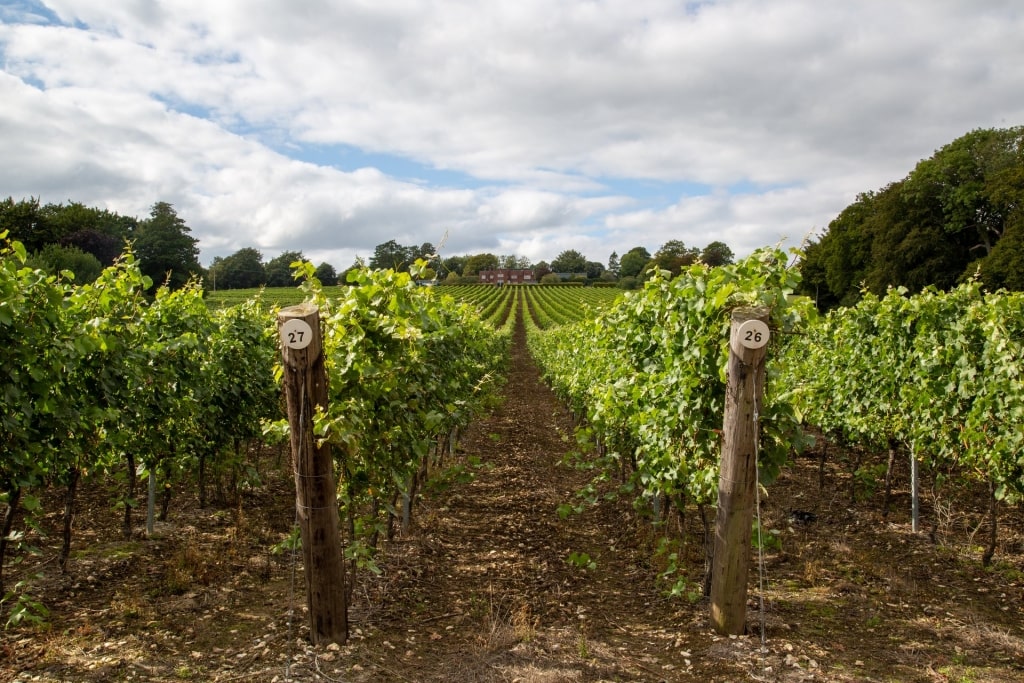
Hambledon vineyard
In the southeast of the country, you’ll find the greatest concentration of the 133 and counting commercial vineyards in Britain. The gently beguiling South Downs region in Hampshire—Southampton’s home county—enjoys the same chalky subsoil as that found in the Côte Des Blancs in Champagne. This is why wine tasting at one of the sparkling wine producers in the region is a highly enjoyable thing to do near Southampton.
English wine producers had realized they’d arrived when they beat the likes of Pol Roger, Veuve Clicquot, and Taittinger in a blind tasting in France in 2015—then repeated the presumption at another blind tasting in early 2016.
Since then, the French have invaded, buying up plots of land across southeast England as climate change challenges output in France. Some of the country’s finest vineyards producing sparkling wine, such as Hambledon, are within easy striking distance of Southampton. Only a half-hour’s drive east, Hambledon is one of England’s oldest commercial vineyards and supplied one of the wines that knocked the French off their sparkling perch in 2015.
8: Walk the Thames
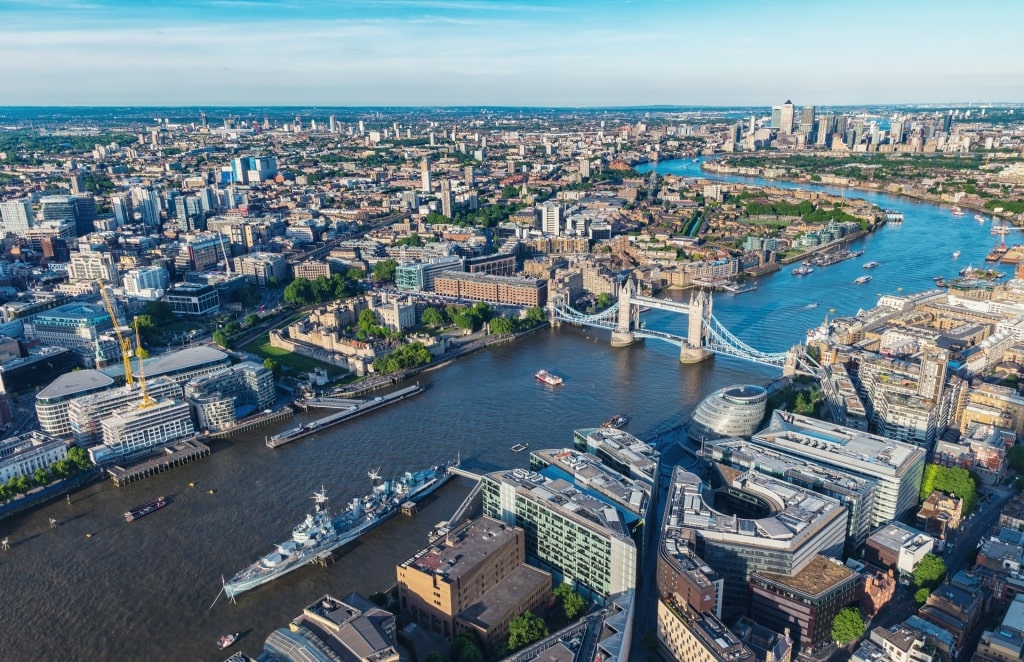
Thames
While it’s maybe a little reductive to describe visiting London as one of the things to do near Southampton, the capital is easily reached by a two-hour dash up the M3 motorway. Perhaps the best way to get to know the city is to join the Thames River in its stately march towards London’s eastern extent and the North Sea.
As the river passes through the center, it’s vaulted by a series of characterful bridges that can help you navigate your route. Begin near Vauxhall Bridge and the green-glassed ziggurat of the MI6 building, aiming for the iconic Tower Bridge as your destination. Heading east, your hour-long route will bring you to some of the best views of the Houses of Parliament, the Tower of London, and the Tate Modern art gallery, among other must-see sights.
En route, as you arrive at London Bridge with Tower Bridge silhouetted just beyond, take the appetite you’ve worked up into the rich aromas and lively stalls of Borough Market—one of London’s standout culinary hubs—for sustenance and a concentrated slice of city life.
9: Shop Oxford Street
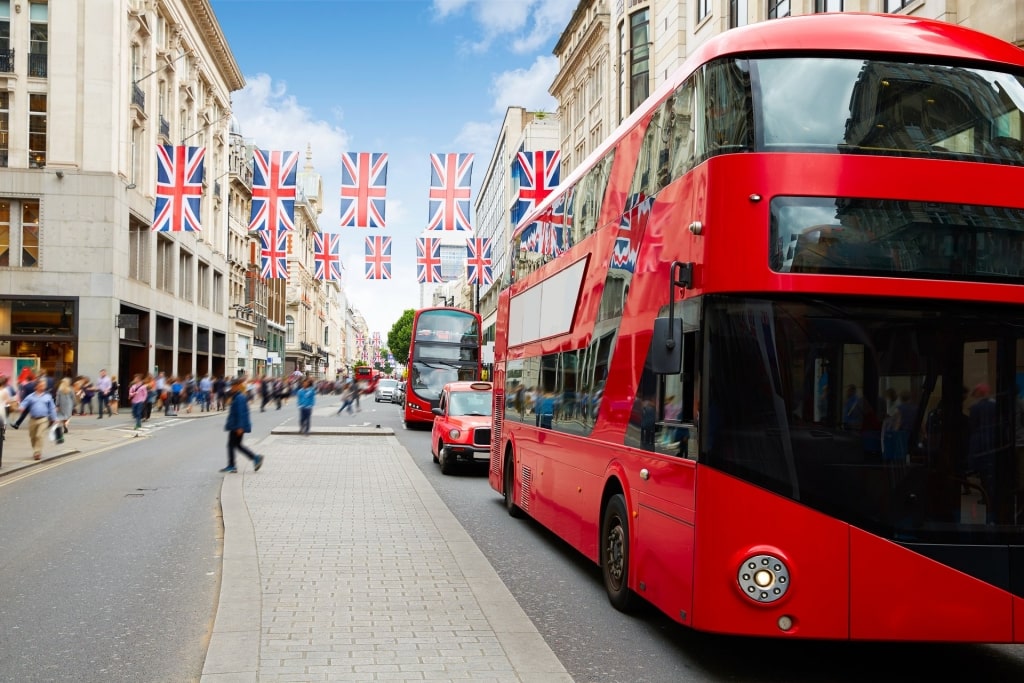
Oxford Street, London
Any visit to London has to, at some juncture, intersect with Oxford Street—one of the world’s greatest shopping arteries.
Be sure to put on your comfiest shoes and order a full English breakfast before launching yourself into this mile-and-a-half avenue of dazzling window displays and seemingly endless choice. Flagship stores of international brands vie for your attention as you stroll the broad sidewalks. Historic department stores such as Selfridges offer a Narnia-like escape into retail heaven.
Read: Best Shopping Cities in Europe
Besides finding extra stuffing to challenge the commitment of your suitcase hinges, Oxford Street also offers numerous little gems providing a necessary change of pace. The exhibitions at the Photographer’s Gallery on Ramillies Street, for example, provide a chance for calm reflection among work by some of the world’s best photographers. Or catch some of the capital’s best comedy at the Soho Theatre, only a few steps away on Dean Street.
The side streets also offer some excellent places to grab a bite. Check out restaurant-lined St. Christopher’s Place or head slightly south for a bite of some Mayfair-style fish-and-chips at the Mayfair Chippy.
10: Soar into Southampton’s Aviation History

Solent Sky Museum, Southampton
While its maritime importance is obvious, Southampton also has storied ties to aviation, particularly during the era of the seaplane. A superb monument to this history is the Solent Sky Museum, a visit to which is one of the best things to do in Southampton.
Within the museum is the opportunity to get up close to over 20 beautifully preserved planes, including a de Havilland Vampire fighter jet and the famous Spitfire. The latter was produced by the Southampton-based aviation manufacturer, Supermarine, which was also renowned for its success in the high-risk 20th-century seaplane race, the Schneider Trophy. Much of the museum is dedicated to this extraordinary race that helped generate engineering advancements that bore fruit for fighter jet design during the Second World War.
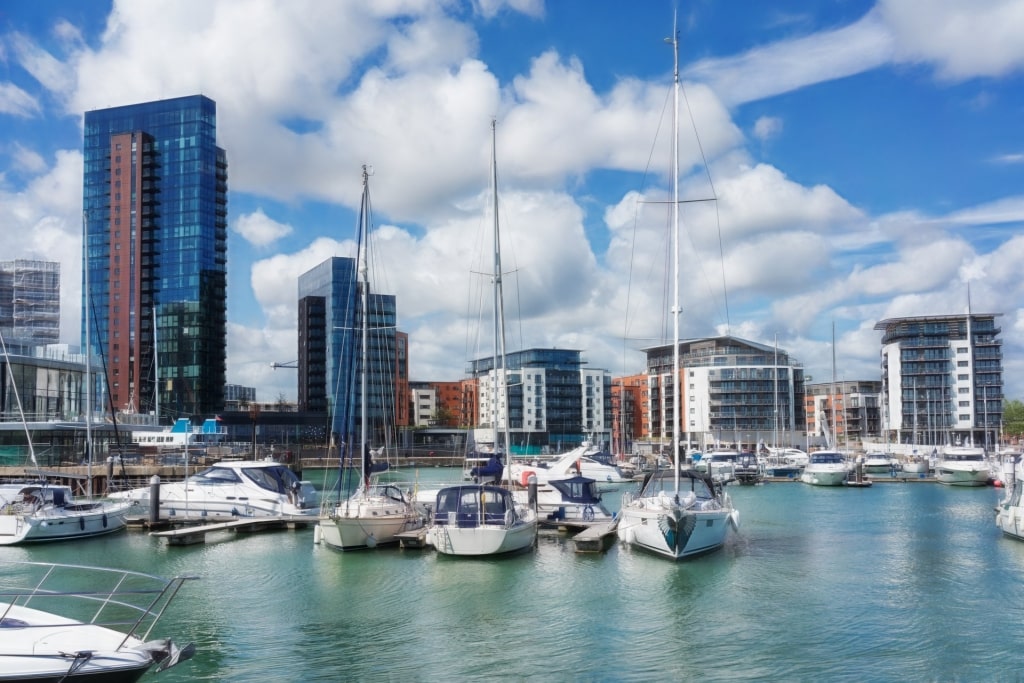
Southampton
Discover all of the incredible things to do in Southampton as the icing on the cake of a cruise to Europe. Browse cruises from Southampton and start planning your next unforgettable vacation.



